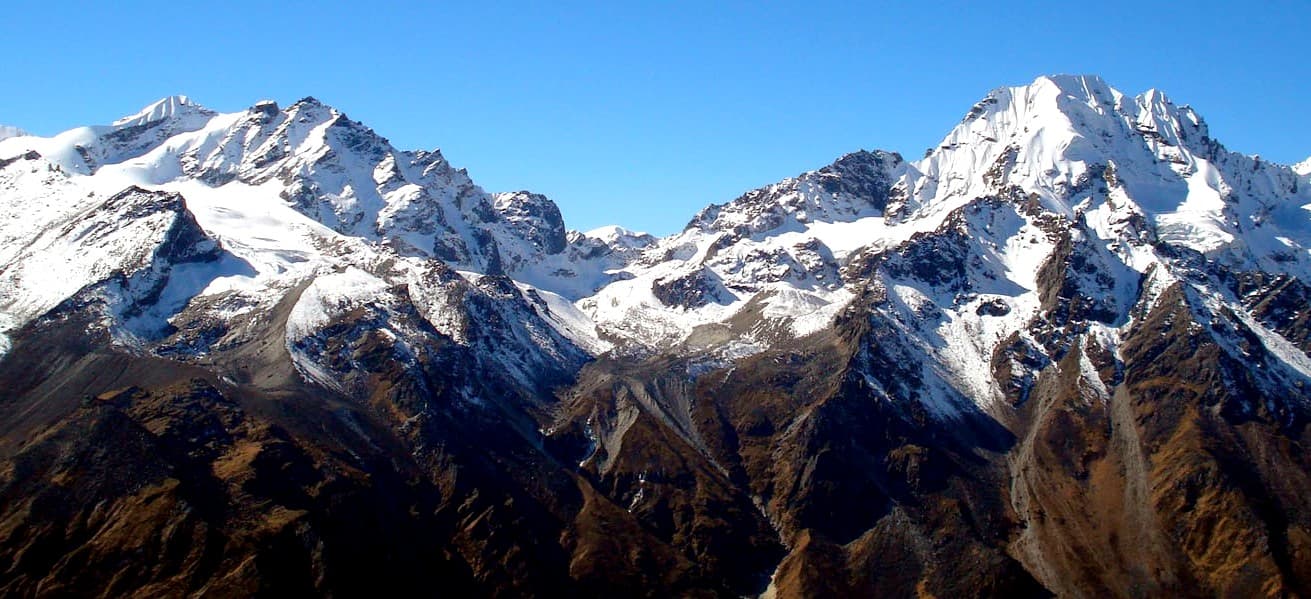Naya Kanga Peak, also known as Ganja La Chuli, is a magnificent trekking peak that reaches a height of 5,844 meters. Nestled in the pristine Langtang region of Nepal, this peak is a hidden gem for mountaineers and adventure enthusiasts. Known for its accessibility and suitability for climbers with varying levels of experience, Naya Kanga offers a remarkable opportunity to enhance your mountaineering skills, all while basking in the guidance of our seasoned climbing guides. This alpine challenge is classified as "slightly difficult," thanks to its substantial snow slopes that provide climbers with a taste of classic alpine adventure.
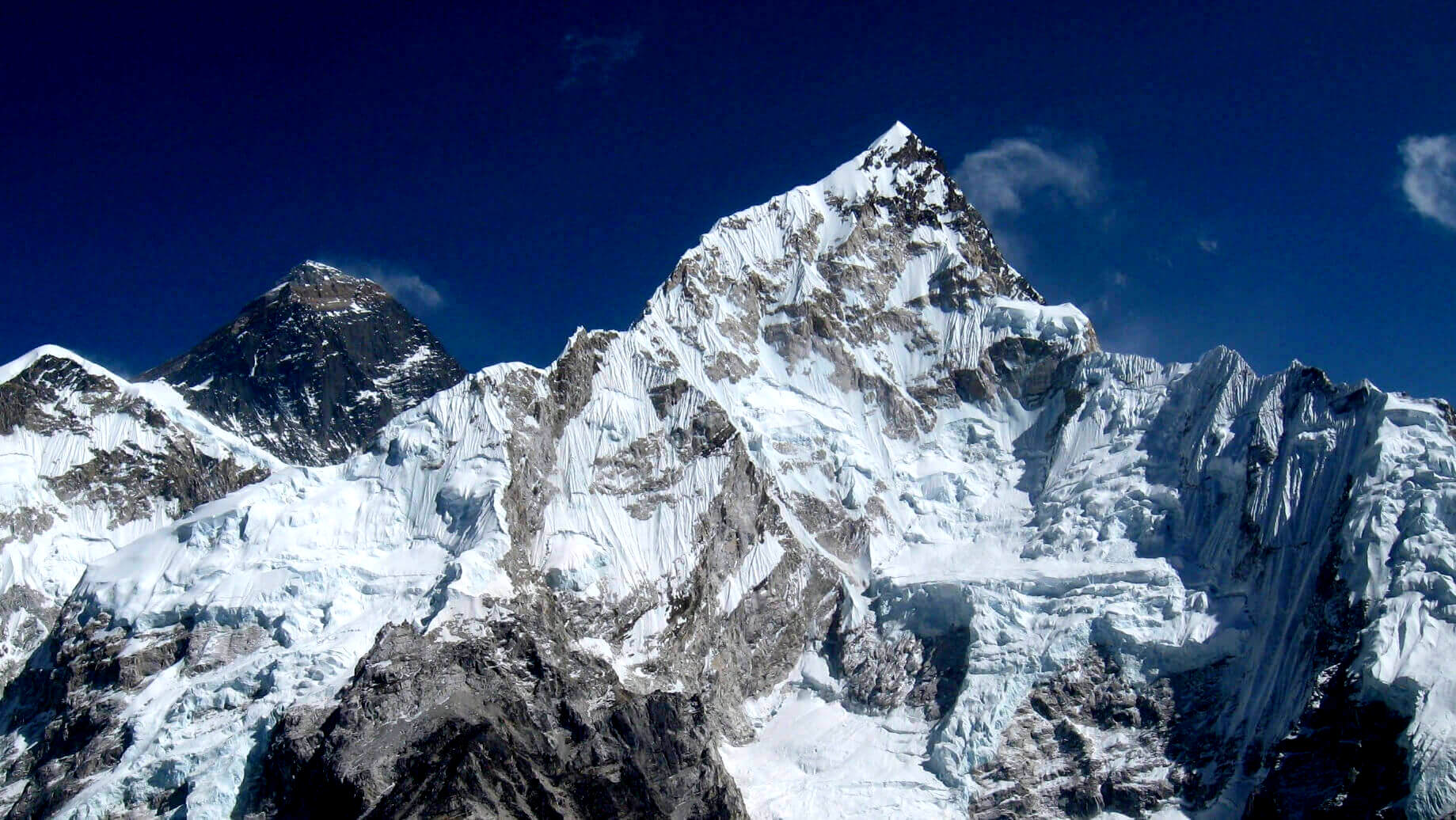
Of all the peak expeditions available in Nepal, Naya Kanga stands out as the most time-efficient, with a climb that can be completed in just 16 days, making it an attractive and budget-friendly option. Located in the southern region of the enchanting Langtang Valley, within the boundaries of Nepal's second-largest national park, and easy reach of Kathmandu, Naya Kanga promises a unique blend of natural beauty and cultural richness. The Langtang Valley, extending toward the Tibet border, bears a distinctive Tibetan influence, both in terms of its cultural heritage and geographical proximity. To the north, the valley is flanked by peaks reaching approximately 6,500 meters, while to the south, a lower range of peaks between 5,000 to 6,000 meters sets the stage for your ascent of Naya Kanga.
The journey to Naya Kanga typically commences from Syabrubesi, a charming village within the Langtang region. The trekking route meanders through lush forests, quaint villages, and idyllic alpine meadows. Along the way, you'll have the privilege of immersing yourself in the rich local culture of the Tamang ethnic group and reveling in the breathtaking vistas of the Himalayan landscapes. As you approach Naya Kanga, you'll encounter the formidable Ganja La Pass, a high-altitude mountain pass that presents its own set of challenges.
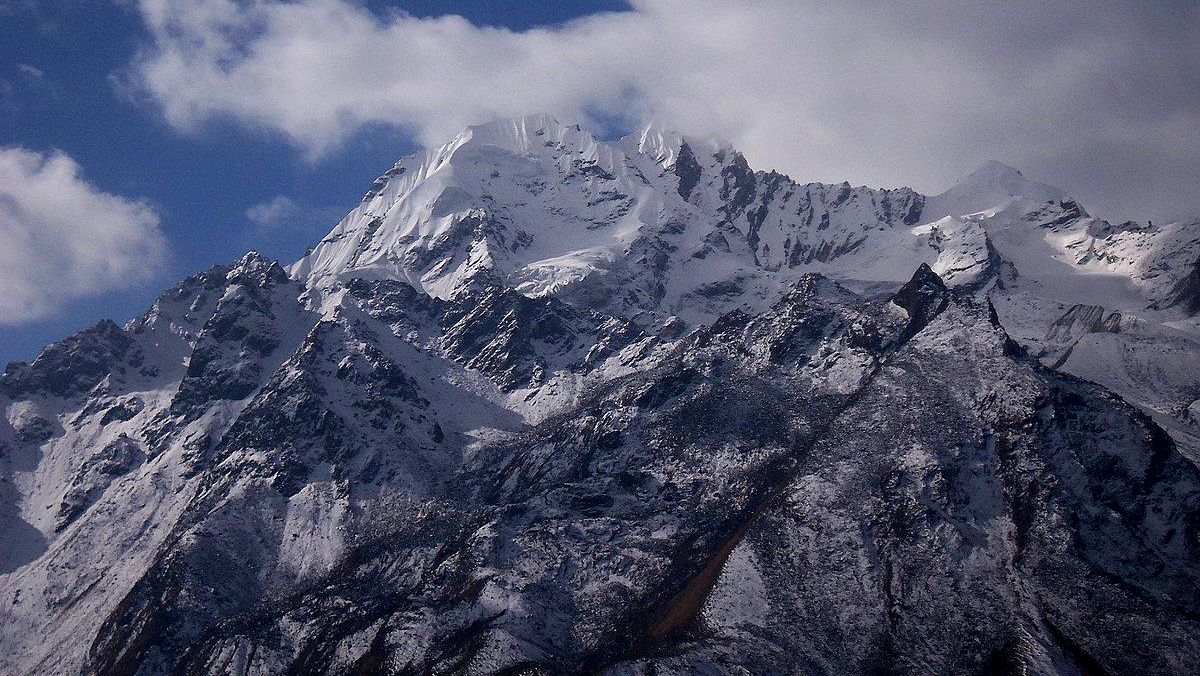
Ascending to the summit of Naya Kanga entails traversing technical sections, including rock and ice climbing, and demands meticulous acclimatization and the use of proper mountaineering gear. The ultimate reward for your efforts is a sweeping, panoramic view of the surrounding Himalayan peaks, including the formidable Langtang Lirung, the imposing Dorje Lakpa, and numerous other peaks that grace the horizon.
While Naya Kanga is an enticing adventure for mountaineers of various levels, it is highly recommended to possess prior experience in peak climbing before embarking on this journey. This experience will not only enhance your safety but also amplify the enjoyment of conquering Naya Kanga Peak.
Highlights of the Naya Kanga
The ascent of Naya Kanga (Ganja La Chuli) offers several highlights and attractions for trekkers and mountaineers. Here are some of the key highlights and experiences associated with Naya Kanga:
- Naya Kanga offers stunning mountain scenery and is part of the Langtang region in Nepal.
- The Langtang Valley Trek is a popular starting point, showcasing diverse landscapes and cultural experiences.
- Engage with Tamang and Tibetan communities, visit monasteries, and immerse in local culture.
- Encounter wildlife like red pandas and Himalayan tahr in Langtang National Park.
- Challenge yourself with technical climbing skills on glaciers, rock walls, and occasional ice sections.
- Reaching the summit rewards climbers with sweeping views of neighboring peaks.
- Teahouses provide comfortable lodging, fostering interactions with fellow trekkers.
- The region offers adventure in a less crowded, off-the-beaten-path environment.
- Cultural exchange opportunities abound, enhancing your trekking experience.
Routes to Climb Naya Kanga Peak
Climbing Naya Kanga Peak (Ganja La Chuli) involves various routes and options, each with its own level of difficulty and characteristics. Here are some of the commonly used routes to climb Naya Kanga Peak:
Normal Route from Kyanjin Gompa
Start at Kathmandu:
- Arrive in Kathmandu, Nepal's capital city.
- Make necessary preparations, including obtaining permits and arranging transportation to Syabrubesi.
Drive to Syabrubesi:
- Drive from Kathmandu to Syabrubesi, the starting point for the trek.
Trek to Kyanjin Gompa:
- Trek through lush forests, terraced fields, and quaint villages.
- Reach Kyanjin Gompa (3,800 meters) and spend a few days acclimatizing.
Trek to High Camp:
- Trek towards the High Camp (4,700 - 5,000 meters) from Kyanjin Gompa.
- Set up a base for the summit push.
Summit Attempt:
- Start the summit attempt early in the morning.
- Navigate through snow and ice sections, as well as rocky terrain.
- Use technical mountaineering skills and equipment.
- Reach the summit of Naya Kanga Peak (5,844 meters) for breathtaking views.
Descent and Return:
- Descend back to the High Camp after summiting.
- Return to Kyanjin Gompa and spend some time there.
Trek back to Syabrubesi:
- Trek back through the Langtang Valley to Syabrubesi.
Return to Kathmandu:
- Drive back to Kathmandu from Syabrubesi.
- Celebrate your successful climb.
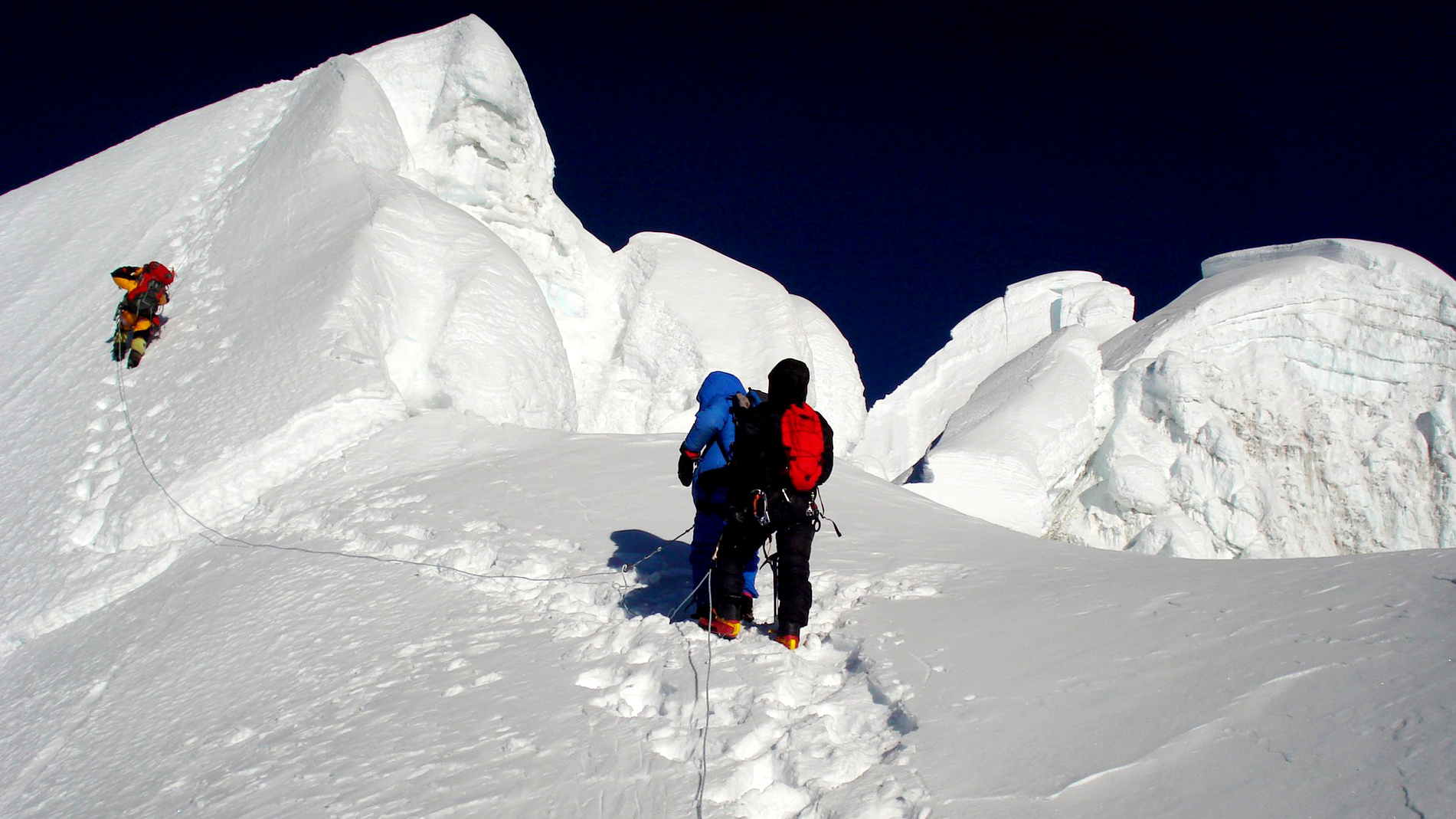
Ganja La Pass Route
Start at Kathmandu:
- Begin in Kathmandu and complete the necessary preparations.
Drive to Syabrubesi:
- Drive from Kathmandu to Syabrubesi.
Trek to Ganja La Pass:
- Trek to Ganja La Pass (5,122 meters) via picturesque landscapes.
- Experience the challenge of high-altitude trekking.
Continue to Kyanjin Gompa:
- Descend from Ganja La Pass and continue trekking to Kyanjin Gompa.
Acclimatization and High Camp:
- Spend time acclimatizing in Kyanjin Gompa.
- Trek to the High Camp for Naya Kanga Peak.
Summit Attempt and Descent:
- Follow the same summit attempt process as the normal route.
- Descend and return to Kyanjin Gompa.
Return to Syabrubesi and Kathmandu:
- Trek back to Syabrubesi and drive to Kathmandu.
Langshisha Ri Route
Start at Kathmandu:
- Begin in Kathmandu and make the necessary preparations.
Drive to Syabrubesi:
- Drive from Kathmandu to Syabrubesi.
Trek to Langtang Valley:
- Trek through the Langtang Valley to reach Langshisha Kharka.
- Set up a base for climbing Langshisha Ri.
Ascend Langshisha Ri:
- Climb Langshisha Ri (6,427 meters) using technical mountaineering skills.
- Enjoy panoramic views of the Langtang region.
Trek to Naya Kanga Base Camp:
Descend back to Langshisha Kharka and trek to Kyanjin Gompa.
Summit Naya Kanga Peak:
- Follow the same process as the normal route to summit Naya Kanga Peak.
Return to Syabrubesi and Kathmandu:
- Trek back to Syabrubesi and drive to Kathmandu.
Naya Kanga and Yala Peak Combo
Start at Kathmandu:
- Commence in Kathmandu and complete necessary preparations.
Drive to Syabrubesi:
- Drive from Kathmandu to Syabrubesi.
Trek to Kyanjin Gompa:
- Trek through the Langtang Valley to reach Kyanjin Gompa.
Acclimatization and High Camp:
- Spend time acclimatizing in Kyanjin Gompa.
- Trek to the High Camp for Naya Kanga Peak.
Summit Naya Kanga Peak:
- Summit Naya Kanga Peak using technical mountaineering skills.
Descend and Trek to Yala Peak Base Camp:
- Descend from Naya Kanga Peak and trek to Yala Peak Base Camp.
Ascend Yala Peak:
- Climb Yala Peak (5,732 meters) using mountaineering techniques.
- Enjoy remarkable views of the Himalayas.
Return to Syabrubesi and Kathmandu:
- Trek back to Syabrubesi and drive to Kathmandu.
Please remember that climbing in the Himalayas requires careful planning, appropriate gear, and expertise. Always consult with experienced guides and local authorities, and stay updated on current conditions before embarking on any climbing expedition.
Difficulty Level to Climb Naya Kanga Peak
The difficulty level of climbing Naya Kanga Peak (Ganja La Chuli) is generally considered to be moderate to challenging. This assessment takes into account various factors, including technical requirements, altitude, weather conditions, physical fitness, and previous climbing experience. Here's a breakdown of the difficulty level:
Moderate Technical Skills
- Climbing Naya Kanga involves using basic mountaineering equipment such as crampons (metal spikes worn on boots), ice axes (used for stability on ice), and ropes for safety and navigation.
- Climbers should have prior experience in using these tools or be willing to undergo training to acquire these skills before attempting the climb.
Altitude Challenge
- The climb's high altitude presents a significant challenge. As you ascend, the oxygen levels in the air decrease, leading to lower oxygen saturation in your body.
- Acclimatization, the process of gradually adapting to higher altitudes, is crucial to minimize the risk of altitude-related issues such as Acute Mountain Sickness (AMS).
- Climbers should follow a gradual ascent profile, including rest days and gaining altitude in stages, to allow their bodies to adjust to the reduced oxygen levels.
Weather Conditions
- The Himalayan region experiences extreme and rapidly changing weather conditions, including freezing temperatures, strong winds, and snowfall.
- Climbers need to be equipped with high-quality gear, including insulated clothing, gloves, headgear, and footwear that can withstand cold temperatures and provide protection against wind and snow.
Physical Fitness
- Climbing at high altitudes demands physical fitness. Cardiovascular endurance and muscular strength are essential for trekking for long hours over uneven terrain and ascending steep sections.
- Climbers should engage in a well-rounded fitness regimen that includes aerobic exercises (running, hiking, cycling) for endurance and strength training for the muscles required during the climb.
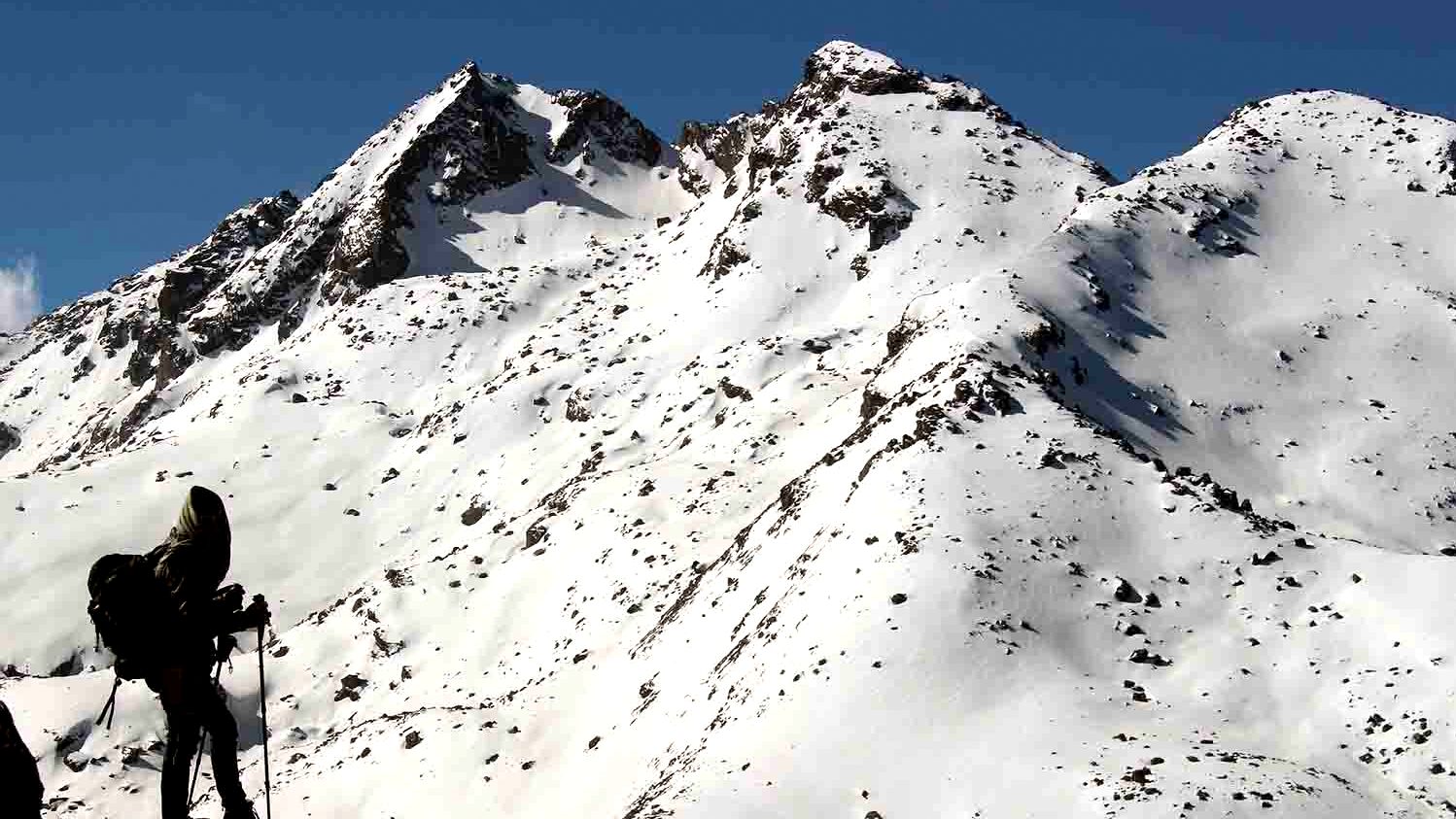
Route Selection
- The normal route from Kyanjin Gompa is generally considered more accessible than alternative routes.
- Alternative routes like the Ganja La Pass involve trekking at even higher altitudes before reaching the base camp, potentially increasing the risk of altitude-related issues.
- Climbers should carefully choose a route based on their skill level, experience, and ability to handle higher altitudes.
Guidance and Experience
- Hiring experienced local guides is highly recommended for safety, navigation, and local knowledge.
- Guides can assess weather conditions, monitor altitude sickness symptoms, and make informed decisions to ensure climbers' well-being.
- Climbers with previous trekking or mountaineering experience will feel more comfortable managing technical challenges and the physical demands of the climb.
Climbing Naya Kanga Peak requires a combination of technical skills, altitude management, physical fitness, and proper guidance. Adequate preparation, training, and the support of experienced guides are essential for a safe and successful ascent. Climbers should thoroughly research the climb, assess their own capabilities, and seek advice from experts before embarking on this challenging journey.
Best season to climb Naya Kanga
The best season to climb Naya Kanga Peak (Ganja La Chuli) is during the pre-monsoon and post-monsoon months, which offer the most favorable weather and climbing conditions. The two main climbing seasons for Naya Kanga are:
Spring Season (March to May)
- Spring is one of the most popular seasons for climbing Naya Kanga.
- Average Temperature Range:
- Daytime: 10°C to 15°C (50°F to 59°F)
- Nighttime: -5°C to 5°C (23°F to 41°F)
Pros:
- Clear skies and excellent visibility for stunning mountain views.
- Mild temperatures during the day for comfortable climbing.
- More stable snow and ice conditions for technical sections.
- Vibrant landscapes with blooming flowers and lush vegetation.
Summer Season (June to August)
- Not recommended for climbing due to the monsoon season.
- Average Temperature Range:
- Daytime: 15°C to 20°C (59°F to 68°F)
- Nighttime: 5°C to 10°C (41°F to 50°F)
Cons:
- Heavy rainfall, poor visibility, and unstable conditions.
- Muddy trails and potential landslides can make trekking hazardous.
- Climbing routes might be inaccessible and unsafe due to wet and slippery conditions.
Autumn Season (September to November)
- Autumn is another optimal season for climbing Naya Kanga.
- Average Temperature Range:
- Daytime: 10°C to 15°C (50°F to 59°F)
- Nighttime: -5°C to 5°C (23°F to 41°F)
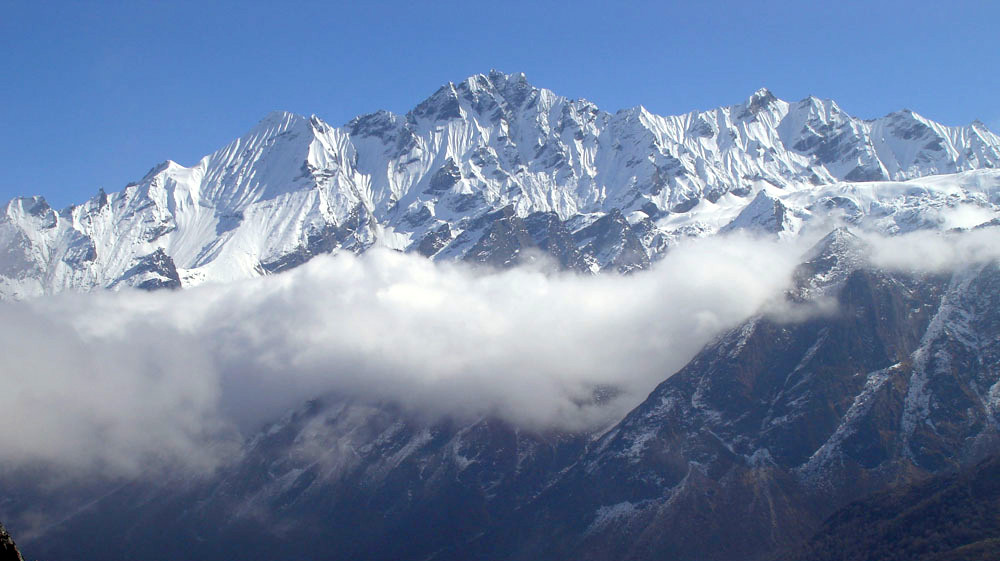
Pros:
- Dry and stable weather after the monsoon season.
- Comfortable temperatures for climbing during the day.
- Clear skies and excellent visibility for breathtaking panoramic views.
- Trails and routes are less crowded compared to the spring season.
Winter Season (December to February):
- Winter brings colder temperatures and more challenging conditions.
- Average Temperature Range:
- Daytime: 0°C to 5°C (32°F to 41°F)
- Nighttime: -10°C to 0°C (14°F to 32°F)
Cons:
- Extremely cold temperatures at higher altitudes.
- Snowfall and icy conditions can make climbing more difficult and hazardous.
- Some routes may be inaccessible due to heavy snow accumulation.
Spring and autumn are generally considered the best seasons for climbing Naya Kanga Peak due to stable weather, mild temperatures, and clear skies. It's crucial to check with local experts, guides, or trekking companies for the most up-to-date weather information before planning your climb.
Required permits for Naya Kanga
To climb Naya Kanga Peak (Ganja La Chuli), you will need to obtain several permits to ensure a legal and safe climbing experience. Here are the main permits that are typically required:
Climbing Permit
- Naya Kanga is classified as a "trekking peak" by the Nepal Mountaineering Association (NMA).
- You will need a climbing permit issued by the NMA to attempt Naya Kanga Peak.
- The climbing permit fee varies depending on the season (spring or autumn) and the nationality of the climber.
TIMS Card (Trekkers' Information Management System)
- All trekkers, including those attempting to climb Naya Kanga, are required to obtain a TIMS card.
- The TIMS card helps manage trekking activities and ensure the safety of trekkers.
- There are separate TIMS cards for independent trekkers and those trekking with organized groups.
National Park/Conservation Area Permit
- The Langtang National Park entry permit is necessary as Naya Kanga is situated within the Langtang region.
- The permit fee contributes to the conservation and maintenance of the area's natural resources.
It's important to note that permit regulations and fees can change, so it's recommended to verify the most current information from official sources or local trekking agencies before starting your expedition.
Major Views from the Naya Kanga Peak Climbing
Climbing Naya Kanga Peak (Ganja La Chuli) offers breathtaking panoramic views of the surrounding Himalayan peaks and stunning landscapes. Here are some of the major views you can expect to enjoy from the summit:
Langtang Himalayan Range:
- The Langtang Himalayan range dominates the view from Naya Kanga Peak.
- Peaks such as Langtang Lirung (7,234 meters), Dorje Lakpa (6,966 meters), and Shishapangma (8,027 meters) are prominent features of the Langtang range.
- Langtang Lirung's massive north face is particularly striking and visible from various angles.

Ganesh Himal Range:
- To the west of Naya Kanga, you'll be treated to views of the Ganesh Himal range.
- Peaks like Ganesh I, II, III, and IV stand out, showcasing their majestic forms.
Dorje Lakpa and Yala Peak:
- Dorje Lakpa and Yala Peak are neighboring peaks that add to the impressive panorama.
- Yala Peak, another trekking peak, might be visible from Naya Kanga and showcases its distinct shape.
Gosainkunda Lakes:
- Depending on the vantage point, you might catch glimpses of the stunning Gosainkunda Lakes, a sacred alpine lake system.
- These lakes are an essential pilgrimage site and add to the natural beauty of the region.
Tibetan Plateau:
- On a clear day, you might be able to see the vast Tibetan Plateau in the distance, extending beyond the immediate mountain ranges.
Breathtaking Landscape:
- Beyond the specific peaks, the view from Naya Kanga showcases the rugged terrain, deep valleys, and alpine meadows characteristic of the Langtang region.
- The contrast between the snow-capped peaks and the verdant landscapes creates a picturesque scene.
Food and Accommodation during the Naya Kanga Peak Climbing
During the Naya Kanga Peak climbing expedition, you'll encounter a variety of accommodations and dining options, ranging from teahouses in lower elevations to camping at higher altitudes. Here's what you can expect in terms of food and accommodation during your climb:
Accommodation
Teahouses (Lower Elevations)
- In the initial stages of your trek in the Langtang region, particularly in lower elevations, you will come across teahouses in villages such as Syabrubesi, Lama Hotel, and Langtang Village.
- Teahouses offer basic yet comfortable lodging options for trekkers and climbers.
- Accommodation in teahouses usually consists of private or shared rooms with simple beds, blankets, and pillows.
- Shared restrooms and basic amenities such as hot showers and electricity (often solar-powered) are available in some teahouses.
- The menu at tea houses includes a variety of meals, ranging from local Nepali and Tibetan dishes to international options like pasta and pancakes.
- Teahouses provide a cozy atmosphere and a chance to interact with fellow trekkers and climbers.
Camping (Higher Elevations)
- As you ascend to higher altitudes, you will transition from teahouses to camping for the summit push and beyond.
- Camping sites are strategically chosen to provide the best protection from the elements and proximity to the climbing routes.
- Accommodation during camping consists of expedition tents, sleeping bags, and sleeping pads provided by your trekking agency or expedition organizer.
- The camping team, including a cook and support staff, will prepare meals at the campsite.
- Camping meals are designed to provide you with the necessary energy and nutrition for the climb and include a mix of local and international dishes.
- Special dietary requirements can often be accommodated if communicated in advance.
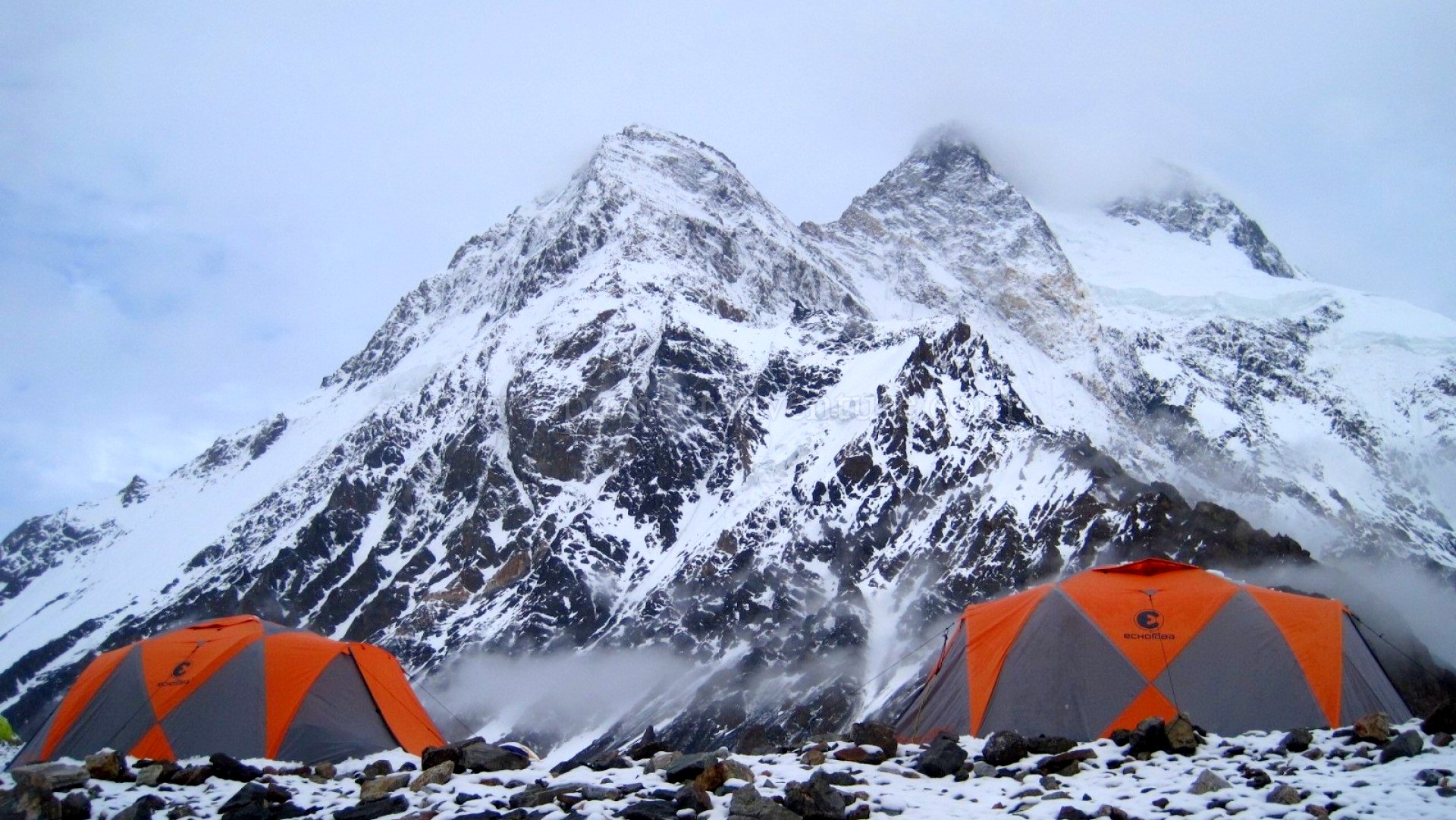
High Camps (Summit Push)
- During the summit push, you may establish high camps at even higher altitudes.
- Accommodation at high camps typically involves smaller tents for shelter during the final stages of the climb.
- These camps are strategically placed to minimize the distance to the summit and maximize safety during the ascent.
Food
Food during the Naya Kanga Peak climbing expedition consists of a combination of meals served at tea houses in lower elevations and meals prepared during camping at higher altitudes. Here's what you can expect in terms of food during your climb:
Teahouse Meals (Lower Elevations)
Breakfast: At teahouses, you can typically enjoy a variety of breakfast options, including:
- Tibetan bread or pancakes
- Eggs (scrambled, fried, boiled)
- Porridge (oatmeal or muesli)
- Local staples like dal bhat (rice and lentil soup)
Lunch: Lunch options may include:
- Nepali or Tibetan dishes (dal bhat, momo)
- Noodles (chow mein or thukpa)
- Sandwiches
- Soups
Dinner: Dinner at tea houses offers a range of choices:
- Local specialties (dal bhat with curry)
- International dishes (pasta, pizza)
- Soups and stews
- Vegetarian options
Beverages: Teahouses often provide a variety of hot and cold beverages, such as:
- Tea (black, green, herbal)
- Coffee
- Soft drinks
- Local alcoholic beverages (raksi or chang)
Camping Meals (Higher Elevations)
- Pre-Climb Meals: Before your summit push, the camping team will prepare nutritious meals to fuel your climb. These meals may include pasta, rice, vegetables, and protein sources like chicken or tofu.
- Summit Day: On the day of your summit attempt, you'll need high-energy foods, such as energy bars, nuts, and chocolate, to keep you fueled during the climb. Your climbing team will ensure you have adequate snacks and water.
- Post-Climb Meals: After a successful summit, you'll return to the campsite for a hearty meal to replenish your energy. This meal may consist of warm soups, pasta, and other nourishing dishes.
- Special Dietary Requests: If you have specific dietary preferences or restrictions, it's important to communicate them to your trekking agency or expedition organizer before the climb. They will do their best to accommodate your needs.
- Hydration: Staying hydrated is crucial at high altitudes. Carry a reusable water bottle or hydration reservoir and use water purification methods (tablets, filters) to ensure safe drinking water.
Climbers should be prepared for simpler accommodations and limited amenities at higher altitudes. Effective communication with your trekking agency or expedition organizer is key to ensuring your specific preferences and needs are addressed in terms of food and accommodation. With proper planning, you can enjoy nourishing meals and comfortable rest along your journey to conquer Naya Kanga Peak.
General Checklist for the Naya Kanga Peak Climbing
Climbing Naya Kanga Peak (Ganja La Chuli) is a challenging endeavor, and being well-prepared is crucial for a safe and successful ascent. Here's a general checklist of essential items and considerations to help you plan for your Naya Kanga climbing expedition:
Climbing Permits and Documentation:
- Ensure you have obtained all the necessary permits, including the climbing permit, TIMS card, and Langtang National Park entry permit.
- Carry multiple photocopies of your permits and identification documents, stored in a waterproof bag.
Trekking and Climbing Gear:
- Mountaineering boots suitable for crampons.
- Crampons and ice axes.
- Climbing harnesses, helmets, and carabiners.
- Ascender and descender devices.
- Climbing rope (ensure it's in good condition).
- Slings and prusik cords.
- Climbing protection gear (nuts, cams, etc., if needed).
- Trekking poles.
- Gaiters to keep snow and debris out of your boots.
- Snowshoes or lightweight crampons for lower altitudes with less snow.
Clothing:
- Layered clothing for variable weather conditions.
- Insulated down jacket or synthetic fill jacket.
- Waterproof and windproof jacket and pants.
- Base layers (thermal tops and bottoms).
- Fleece or softshell jacket.
- Moisture-wicking shirts and underwear.
- Waterproof and insulated gloves or mittens.
- Warm hat and balaclava.
- Neck gaiter or scarf.
- Sunglasses with UV protection and side shields.
- Ski goggles.
Camping and Climbing Equipment:
- Four-season mountaineering tent with a groundsheet.
- Sleeping bag suitable for cold temperatures (rated to at least -10°C/14°F).
- Sleeping pad for insulation and comfort.
- Stove and fuel for cooking.
- Cooking utensils, pots, and utensils.
- Headlamp with extra batteries.
- Multi-tool or knife.
- Lightweight crampon-compatible mountaineering backpack.
Hydration and Nutrition:
- Water purification system (tablets, filter, or UV purifier).
- Sufficient hydration (water bottles or hydration reservoir).
- High-energy and lightweight food (energy bars, nuts, dehydrated meals, etc.).
- Cooking fuel (as per your stove type).
- Extra food for emergencies.
First Aid and Medications:
- Comprehensive first aid kit.
- Personal medications and prescriptions.
- High-altitude medication (consult your healthcare provider).
- Diamox or similar medication for altitude sickness prevention (if recommended by a doctor).
Navigation and Communication:
- Detailed topographic maps of the area.
- GPS device or smartphone with offline maps and a backup power source.
- Satellite phone or emergency communication device (optional but highly recommended).
- Compass.
Personal Items:
- Passport and permits.
- Money (local currency and some USD for emergencies).
- Travel insurance that covers high-altitude climbing.
- Camera and extra batteries.
- Journal and pen.
- Toiletries and personal hygiene items.
Climbing Team and Guides:
- Experienced climbing guide (highly recommended).
- Climbing partners if not going with a guided expedition.
- Ensure everyone in your team has the required gear and equipment.
Training and Preparation:
- Adequate physical training and fitness.
- Altitude acclimatization plan.
- Familiarity with basic mountaineering skills and techniques.
Remember that this is a general checklist, and specific requirements may vary depending on your experience, the season, and your chosen route. Be sure to consult with your climbing guide or trekking agency for any additional items or specific recommendations tailored to your Naya Kanga climbing expedition. Safety and preparedness should be top priorities for any high-altitude adventure.
Frequently Asked Questions (FAQs) for climbing Naya Kanga Peak (Ganja La Chuli):
Q. What is the altitude of Naya Kanga Peak?
A. Naya Kanga Peak stands at an elevation of 5,844 meters (19,163 feet) above sea level.
Q. Do I need prior climbing experience to attempt Naya Kanga Peak?
A. While prior climbing experience is beneficial, Naya Kanga is considered a trekking peak, making it accessible to climbers with basic mountaineering skills. However, some technical climbing skills are necessary, and it's advisable to undergo training or hire experienced guides.
Q. When is the best time to climb Naya Kanga Peak?
A. The best seasons for climbing Naya Kanga are spring (March to May) and autumn (September to November). These periods offer stable weather conditions, clear skies, and comfortable temperatures for climbing.
Q. How long does it take to climb Naya Kanga Peak?
A. The duration of the climb can vary depending on your chosen route and acclimatization schedule. Typically, a Naya Kanga expedition takes around 15 to 20 days, including trekking to the base camp, acclimatization days, summit attempt, and the return trek.
Q. What permits do I need to climb Naya Kanga Peak?
A. Climbers need a climbing permit from the Nepal Mountaineering Association (NMA). Additionally, you'll require a TIMS card (Trekkers' Information Management System) and a Langtang National Park entry permit.
Q. Are guides and porters necessary for Naya Kanga Peak climbing?
A. While it's not mandatory to hire guides and porters, it's highly recommended for safety, navigation, and logistical support. Experienced local guides can enhance your climbing experience and help you manage challenging conditions.
Q. What are the risks associated with climbing Naya Kanga Peak?
A. Risks include altitude sickness (AMS), avalanches, crevasse falls, frostbite, and adverse weather conditions. Proper acclimatization, appropriate gear, and following safety guidelines are essential to mitigate these risks.
Q. How physically fit do I need to be to climb Naya Kanga Peak?
A. Climbers should be in good physical condition with a focus on cardiovascular fitness and muscular strength. Pre-expedition training, including hiking, running, and strength exercises, is recommended.
Q. What are the accommodations like during the climb?
A. Accommodations vary from teahouses in the lower elevations to camping at higher altitudes. Teahouses provide basic amenities, while higher up, climbers need to rely on expedition tents and camping equipment.
Q. Can I combine Naya Kanga Peak with other peaks or treks in the Langtang region?
A. Yes, it's possible to combine Naya Kanga with other nearby peaks like Yala Peak or extend your trekking adventure in the Langtang Valley. Custom itineraries can be designed to suit your preferences.
8000m Mountain Expeditions
We Offer the Following similar 8000m Mountain Expedition in Nepal
Mt Everest Expedition (8848.86 m)
Manaslu Expedition (8,163 m)
Makalu Expedition (8,463m)
Kanchenjunga Expedition (8,586 m)
Lhotse Expedition (8,516 m)
We also offer peak climbing expeditions in Nepal at altitudes of 7000 and 6000 meters.
7000 M Peaks for Climbing and Expedition
Gangapurna Expedition (7,455 m)
Pumori Expedition (7,145 m)
Tilicho Peak Expedition (7,134 m)
Annapurna South Expedition (7,219 m)
6000 M Peaks for Climbing and Expedition in Nepal
Mt Ama Dablam Expedition (6,812 m)
Island Peak Expedition (6,160 m)
Mera Peak Climbing (6,476 m)
Chulu West Peak Climbing (6,419 m)
Pisang Peak Climbing (6,091 m)
Singu Chuli Peak Climbing (6,501 m)
Island Peak Climbing with Everest Base Camp Trek
Lobuche Peak Climbing with Everest Base Camp
If you need any further information, please contact us, Email: [email protected], Phone: +977- 985 100 5129 (WhatsApp)

